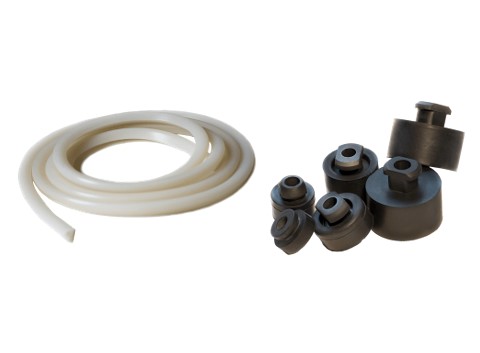
There are so many different rubber and plastic materials used to manufacture parts, but only a few of them may be suitable for your requirements. While some compounds are regularly compared – such as neoprene and nitrile or EPDM and Viton – other aren’t assessed together quite as often.
However, the right fit requires a closer inspection. Both EPDM and TPE are very popular materials, so which one is better for your applications? It’s time to break down which material you should choose when it comes down to EPDM vs. TPE.
The Differences Between EPDM and TPE
While each material has its own special qualities, EPDM rubber and TPE actually share quite a few characteristics. To start, both materials boast similar resistances to weathering, ozone, and water. TPE and EPDM are both easily processed into a variety of parts, giving businesses plenty of flexibility whether they need extruded seals, precision molded gaskets, or some other item.
Of course, there are some key reasons why these compounds don’t always overlap. Those reasons include the following factors:
- Manufacturing process
- Material resistances
- Compression set
- Temperature range
- Color options
- Sustainability
Manufacturing process
As you may expect between a synthetic rubber and a thermoplastic elastomer, TPE and EPDM have different origins. EPDM stands for Ethylene Propylene Diene Monomer and is made when ethylene, propylene, and certain other alpha-olefin comonomers are polymerized. TPE accounts for a range of compounds that combine hard and soft plastics to product an elastomer that results in a different level of hardness depending on what is needed.
One of the biggest advantages of EPDM is that it can be manufactured into a wide range of parts. The vast majority of industries can typically find some use for EPDM as it can easily be die cut, molded, extruded, and processed in just about any form and is extremely versatile.
TPE is also quite a versatile material used in multiple industries. While this plastic can be manufactured in multiple ways, it’s typically known most for extrusions, coextrusions, and sealing products, although companies can certainly get creative with this particular compound.
Material resistances
Even though EPDM and TPE share several resistances, they do differ when it comes to solvents and other substances. TPE is quite good at dealing with solvents, whereas EPDM will break down when in contact with solvents. TPE also offers slightly better tear and oil resistance compared to EPDM.
Compression set
If your parts need to resist deformation caused by long-term compression, EPDM is likely going to be your preferred material. This synthetic rubber promises good compression set for a long time, even for outdoor applications. TPE’s compression set can be described as fair, but it is known to creep over time when under the influence of extreme stress and pressure.
Temperature range
Both TPE and EPDM provide adequate temperature resistance for a wide range of industries. However, EPDM does offer a better overall temperature range when comparing the two compounds:
- EPDM: -60 to 350° Fahrenheit
- TPE: -30 to 250° Fahrenheit
Color options
If you have a particular color preference for your parts, TPE is much more likely to accommodate your needs. With EPDM, you’re pretty much limited to various shades of gray and black. TPE can be processed using common dyes to create various part that are colored for branding, color coding, or any other purpose where you would want something a little more attractive.
Sustainability
One of TPEs most notable benefits for some businesses is that it is a sustainable material that can be recycled. Old TPE parts can be melted down and molded or extruded again in different products. Like many other rubbers and plastics, EPDM can’t be recycled in the same way, making TPE an attractive option for its reduced environmental footprint.
EPDM vs. TPE: Invest in the Right Materials for Your Parts
Whether TPE, EPDM, or some other material is perfect for your parts, it’s essential to figure out the best solution for your applications. There are several factors that all impact your material selection, but it’s not easy investing in the right parts without some help.
At Timco Rubber, it’s our experts’ jobs to help businesses identify and design the right parts based on your performance requirements, environment, and budget. Give us a call at 800-969-6242 or contact us online to talk to one of our experts about your exact part needs.
